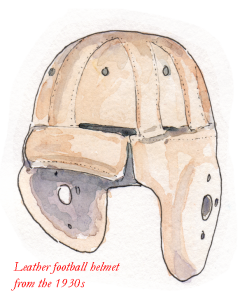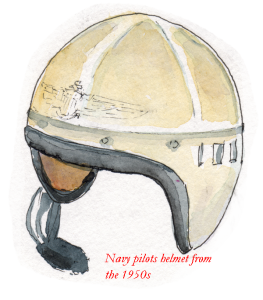Mild TRAUMATIC BRAIN INJURY (mTBI) – CONCUSSIONS

ISSN-1059-6518 Volume 25 Number 6
Mild TRAUMATIC BRAIN INJURY (mTBI) – CONCUSSIONS
By Frank Hubbell, DO
For years we rode our bicycles without helmets, played touch or flag football without helmets or padding, climbed, paddled, skied and did all sorts of sports without worrying about a little  bump on the head. But, it would appear that modern medicine, moms, and coaches have uncovered some potentially major problems associated with a simple head injury known as a concussion.
bump on the head. But, it would appear that modern medicine, moms, and coaches have uncovered some potentially major problems associated with a simple head injury known as a concussion.
Any bump or blow the head that damages the brain is referred to as a traumatic brain injury (TBI). A TBI is an injury to the brain that disrupts of the brain’s normal functioning . TBI is referred to as mild if the loss of consciousness or changes in level of consciousness are brief. TBI is considered severe if the changes or loss of consciousness are extended.
Traumatic Brain Injury Stats:
There are 1,700,000 TBIs per year in the USA.
75% of TBIs are concussions or other forms of mild TBI.
Causes of TBI:
Falls – 35.2%
Motor Vehicle Accidents – 17.3% (largest % of deaths – 31.8%)
Struck by/Against – 16.5% (largest cause of TBI in children – 25%)
Assault – 10%
Unknown/other – 21%
Helmets and TBI:
90% of fatal bicycle accident victims were NOT wearing a helmet.
Motorcycle accidents – greater chance of severe TBI and death if the driver or passenger were NOT wearing a helmet.
Sports:
21% of TBI are sports-related in children and teenagers.
#1 cause of sports-related death.
85% of head injuries (TBI) are prevented by helmets.
A concussion is the most common form of TBI. A concussion occurs when the brain has suffered a biomechanical injury, a direct force has been applied to the head, causing functional rather than structural changes of the brain, in other words a disruption of normal functioning of the brain. What this simply means is that the individual has the symptoms of a head injury, but all diagnostic imaging, xrays, MRIs, and CTs of the head are normal. The insult to the brain is on a physiological, cellular level, rather than creating gross anatomical changes.
